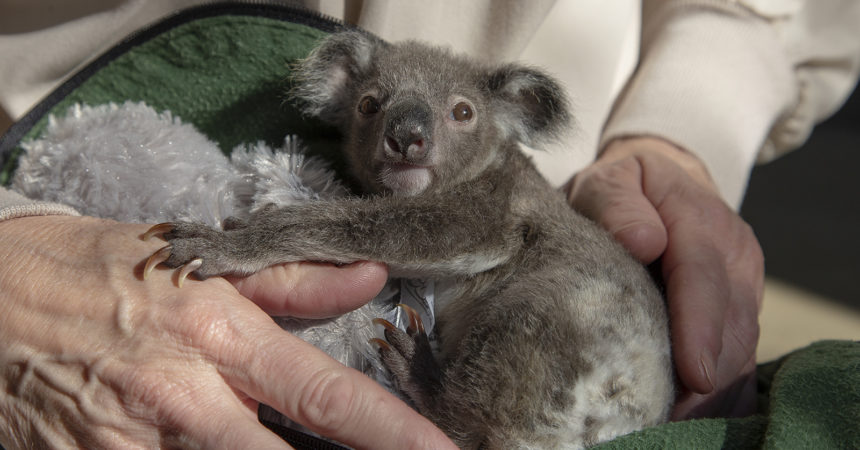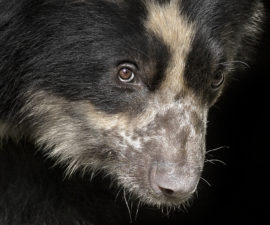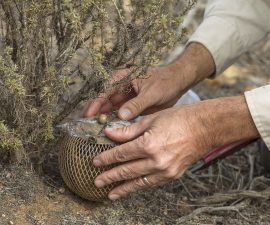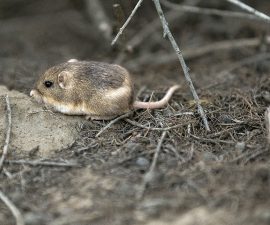Wildlife care specialists at the San Diego Zoo are providing round-the-clock specialty care to a young male koala joey who lost his mother. The joey’s mother died from cancer in mid-December, when he was about 5-and-a-half months old and was still in her pouch. To save the joey’s life, Zoo veterinarians and wildlife care specialists intervened and began feeding and caring for the little marsupial.
“When his mother died, this little joey was too small to come out of the pouch and live on his own,” said Becky Kier, lead neonatal assisted care specialist, San Diego Zoo. “We weren’t convinced he would last the first week, but with intensive care, he is showing us he is a fighter. While he has a long way to go, our team is doing everything we can for him—and each day, we are more and more optimistic about his chance of survival.”
The joey is currently living in a faux pouch inside an incubator, with the temperature and humidity set to simulate conditions in his mother’s pouch. He is fed a special milk replacement six times a day, around the clock. When born, a koala joey is about the size of a jelly bean. It instinctively uses its strong forelimbs and hands to crawl from the birth canal into its mother’s pouch. Once in the pouch, the joey attaches to one of two nipples, where it drinks milk. The joey grows slowly, and at around 5 or 6 months of age, the joey begins to poke its head outside the pouch. It was at that age when this joey lost his mother.
Now, at 7-and-a-half months old, the joey is at the stage where he would be venturing out of his mother’s pouch periodically. To encourage exercise and exploration, his caregivers take his pouch out of the incubator and attach it to a toy koala sitting in a custom-designed miniature eucalyptus tree. When the joey awakes, he climbs out of the pouch and up onto the back of his plush “stand-in mom.” Here, he sits amongst eucalyptus branches, where he is uses his developing hand-eye coordination to grasp at leaves and chew on stems.
Each day, he spends time outdoors in the sun, where he is starting to learn the sights, sounds, and smells of the koalas around him. As he grows stronger, his caregivers will encourage him to rely on his own instincts to eat eucalyptus, climb on branches and eventually live in his own habitat at the Zoo’s Australian Outback.
The joey was named Omeo (pronounced Ooh-me-ooh), an Aboriginal word that means “mountains” or “hills.” He was given this name because of his uphill battle to survive—and in tribute to the koalas of Australia’s Blue Mountains, where a team led by Kellie Leigh, Ph.D., executive director of Science for Wildlife and a San Diego Zoo Global-supported researcher, is working to save koalas and koala habitats devastated by the recent wildfires. The Blue Mountains World Heritage Region is home to the most genetically diverse population of koalas in the world, and San Diego Zoo Global is committing resources to ensure that the population is recovered. For more information, and to support these efforts, visit EndExtinction.org/Help.





